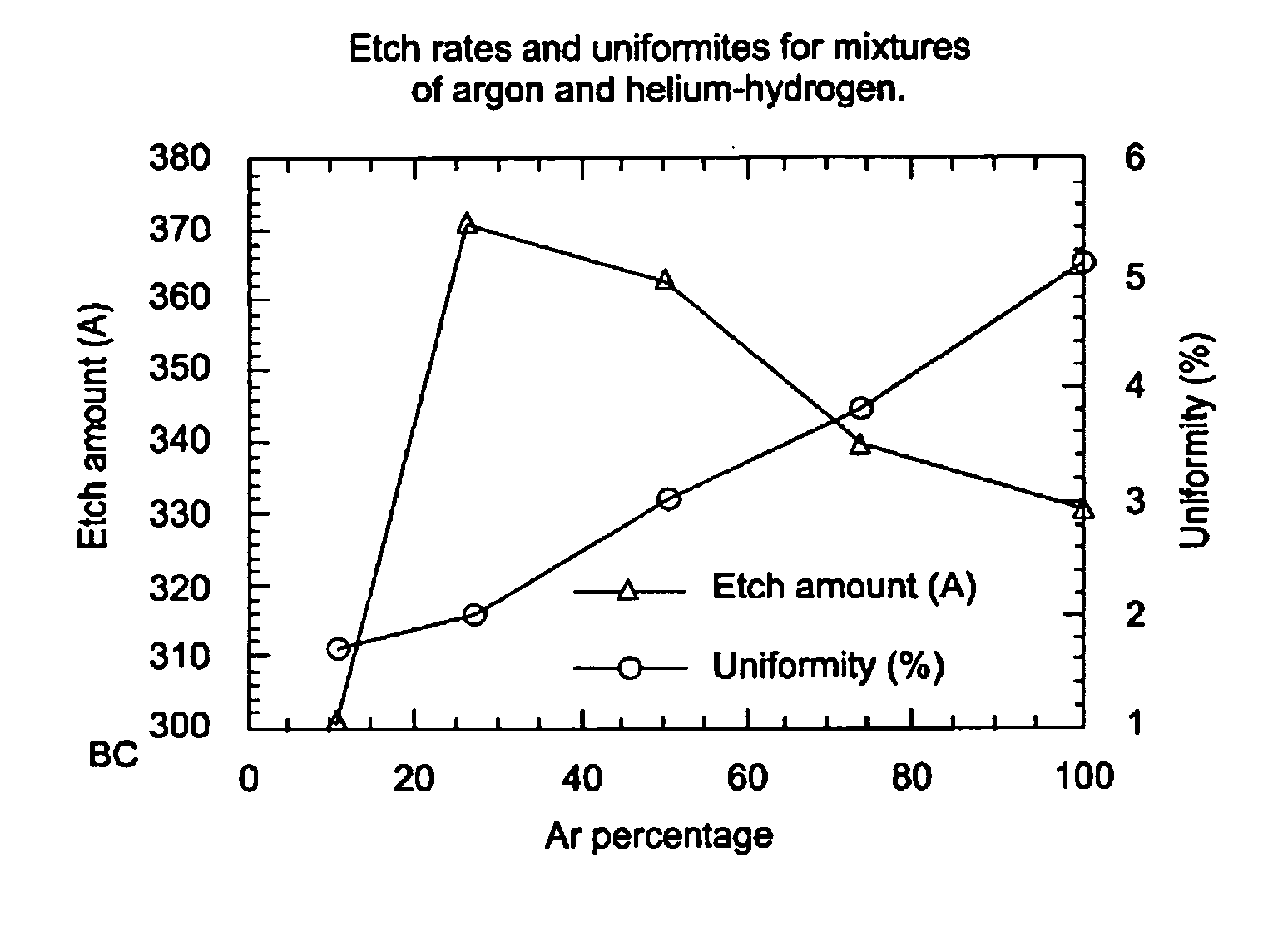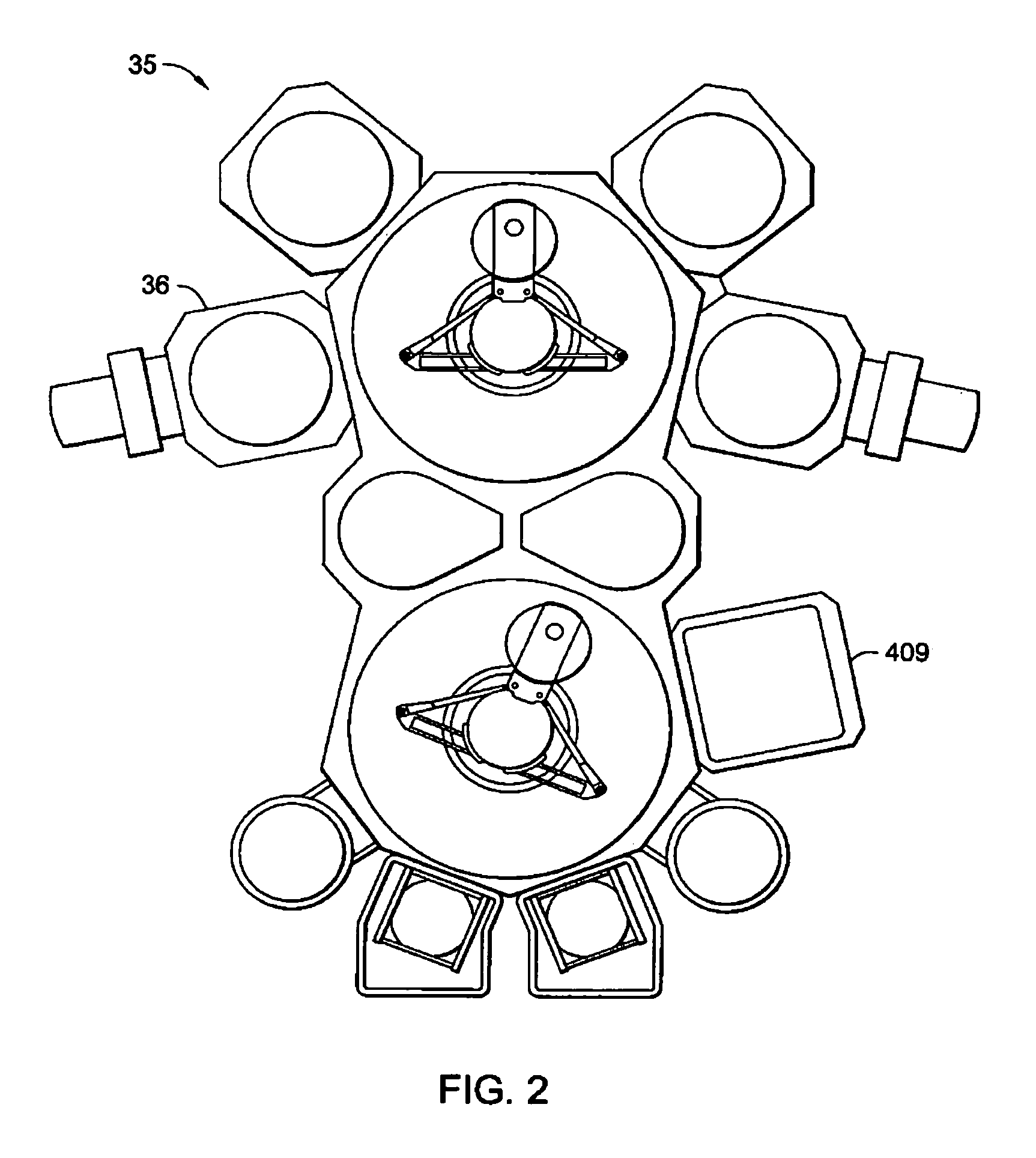Plasma preclean with argon, helium, and hydrogen gases
a technology of argon and hydrogen gas, applied in the direction of vacuum evaporation coating, chemical/physical/physicochemical process, coating, etc., can solve the problems of reducing the electromigration resistance of small features, altering the performance of devices including small features, and sputter etch processes can damage silicon layers by physical bombardment, etc., to achieve the effect of improving etch rate, high aspect ratio, and increasing etch ra
- Summary
- Abstract
- Description
- Claims
- Application Information
AI Technical Summary
Benefits of technology
Problems solved by technology
Method used
Image
Examples
example 1
[0033]Examples of the present invention were performed by varying the gas mixture from 100% argon to 10% argon to preclean a patterned substrate surface in a Preclean II chamber on an ENDURA® platform available from Applied Materials, Inc. A silicon wafer having sub 0.30 μm wide contacts, vias, trenches, and other patterns, having an aspect ratio≧4:1 (i.e., a depth of at least 1.20 μm) was introduced into the system. The wafer was then plasma treated with a mixture of argon and He / H2 wherein helium and hydrogen were provided as a mixture having 5% hydrogen by volume.
[0034]Referring to FIG. 4, the etch uniformity drops continuously as the helium mixture is added to the process gas. Further, the etch rate improves until the argon percentage is reduced to 25% by volume.
example 2 (
Comparison)
[0035]For comparison, Example 1 was repeated without the helium. FIG. 5 compares the etch rate for the Ar / He / H2 plasma of Example 1 and the Ar / H2 plasma of Example 2. FIG. 6 compares the etch uniformity for the Ar / He / H2 plasma of Example 1 and the Ar / H2 plasma of Example 2.
PUM
| Property | Measurement | Unit |
|---|---|---|
| pressure | aaaaa | aaaaa |
| power | aaaaa | aaaaa |
| power | aaaaa | aaaaa |
Abstract
Description
Claims
Application Information
 Login to View More
Login to View More - R&D
- Intellectual Property
- Life Sciences
- Materials
- Tech Scout
- Unparalleled Data Quality
- Higher Quality Content
- 60% Fewer Hallucinations
Browse by: Latest US Patents, China's latest patents, Technical Efficacy Thesaurus, Application Domain, Technology Topic, Popular Technical Reports.
© 2025 PatSnap. All rights reserved.Legal|Privacy policy|Modern Slavery Act Transparency Statement|Sitemap|About US| Contact US: help@patsnap.com



